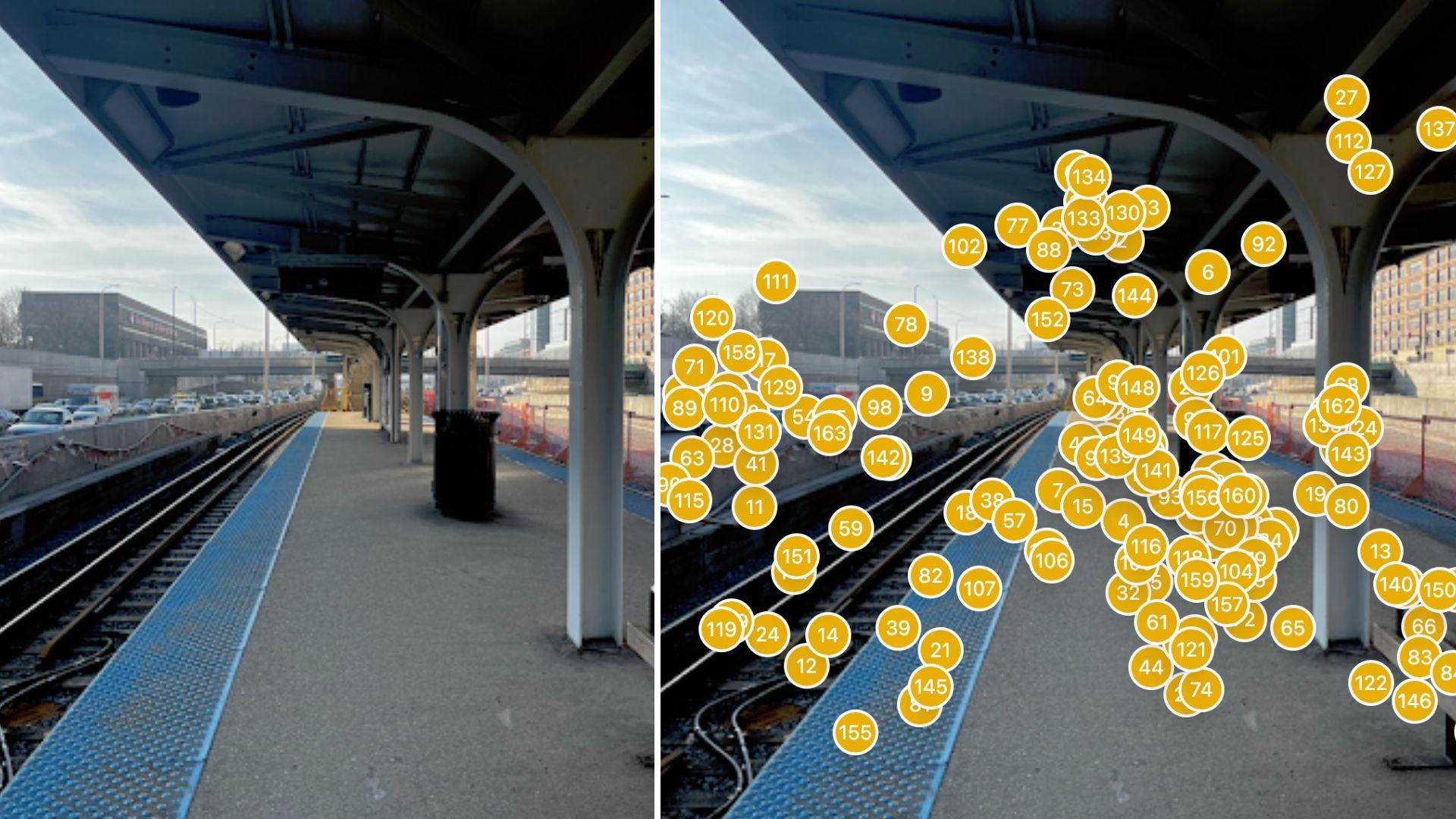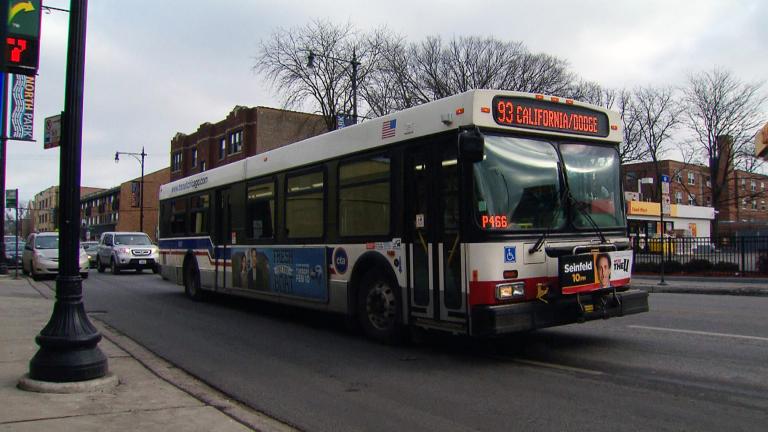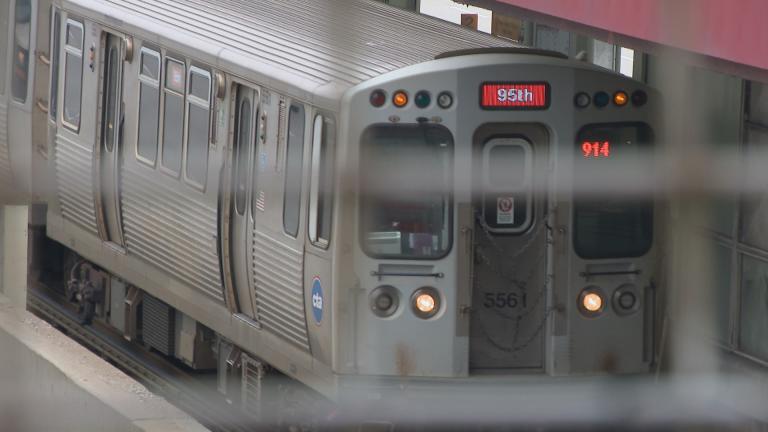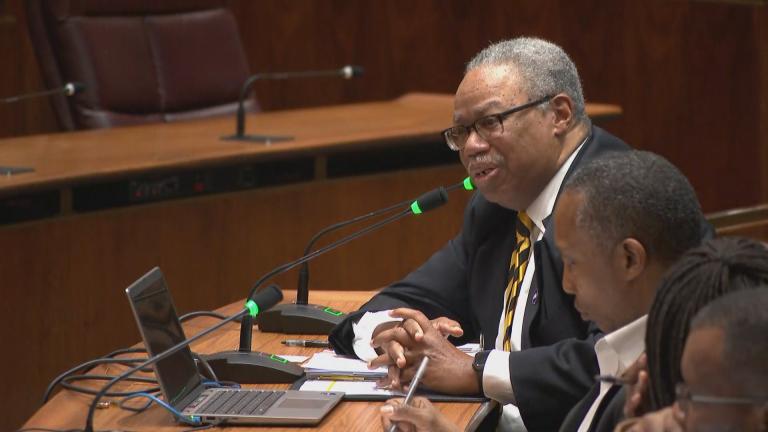(Video produced by Nicole Cardos)
What would make this station your favorite CTA station?
That’s one of the questions behind a student-led survey that aims to learn more about what transit riders would like to see improved in the design of some of the CTA stations that riders frequent the most.
Urban studies students at the University of Illinois Chicago — Evan Bratina, Taylor Lebron, Alexander “Xan” Gordon and Kasie Nette — are conducting the survey as part of a capstone project, which focuses on getting rider feedback on the UIC Halsted Blue Line station, Roosevelt Red Line station and the Clark/Division Red Line station.
“We’re looking at stations, specifically, because that’s a huge part of someone’s commute,” Nette said. “People definitely can be waiting there for a really long time, and we want to make sure that there’s safe, quality transit services, but also, what could actually bring joy to people?”
In collaboration with local architectural firm GoArchitect, and the use of the survey tool Engage, the students collect feedback from survey participants on how they’d improve the interior and exterior designs of stations, along with how they’d rate visual appearance, accessibility and more.
The survey is available in English and Spanish, as well as in Mandarin.
 The UIC Halsted Blue Line station is one of three CTA stations that riders can give design feedback on as part of a student-led capstone project. (Courtesy of Kasie Nette via Engage)
The UIC Halsted Blue Line station is one of three CTA stations that riders can give design feedback on as part of a student-led capstone project. (Courtesy of Kasie Nette via Engage)
In choosing the specific stations to focus on for the project, the students considered the 24-hour service on the Red and Blue lines, the high ridership levels at each station and their differing features. For instance, the UIC Halsted Blue Line station is along an expressway, while the Roosevelt Red Line station is underground and a connection to other CTA lines.
“I think more people in Chicago want to see more of that investment being put in and more attention being put toward how to improve those services and make it more efficient,” Gordon said.
The survey responses that the students received so far include suggestions such as improved maps and signage, wider platforms, deep cleanings, and more seating and heating lamps.
After the initial survey stage of the project, the students will take the responses and build a proposition that will then be given back to survey participants for more feedback ahead of their final presentation in the spring. The students also plan to share their findings with CTA officials.
In a statement to WTTW News, a CTA spokesperson said the agency “regularly engages in conversations” with customers and stakeholders, and is supportive of the independent, student-led effort looking into ways the agency can improve the commuting experience on its system.
“Our community engagement team is eagerly looking forward to seeing their results and looking for ways to incorporate their findings into our planning alongside the current variety of CTA led communication channels to solicit customer input,” the statement reads.
 The Roosevelt Red Line station is one of three CTA stations that a group of students are focusing on for their project about improving stations through rider feedback. (Nicole Cardos / WTTW News)
The Roosevelt Red Line station is one of three CTA stations that a group of students are focusing on for their project about improving stations through rider feedback. (Nicole Cardos / WTTW News)
In recent years, the CTA has faced increased frustration from riders over unreliable service and reduced bus and train schedules due to operator shortages since the pandemic. In a City Council committee hearing Tuesday, CTA President Dorval Carter said the transit agency plans to restore reduced bus and train service to pre-pandemic levels this year.
Even as the CTA deals with “ghost trains” and employee shortages, which Nette said relates more to system issues, she believes the transit agency could still take on design issues.
“I hope the project can give the transit agency a few smaller, creative and tangible ideas to improve the everyday experience for riders,” Nette said. “It’s a pipe dream, but it gives us hope.”
Contact Eunice Alpasan: @eunicealpasan | 773-509-5362 | [email protected]







